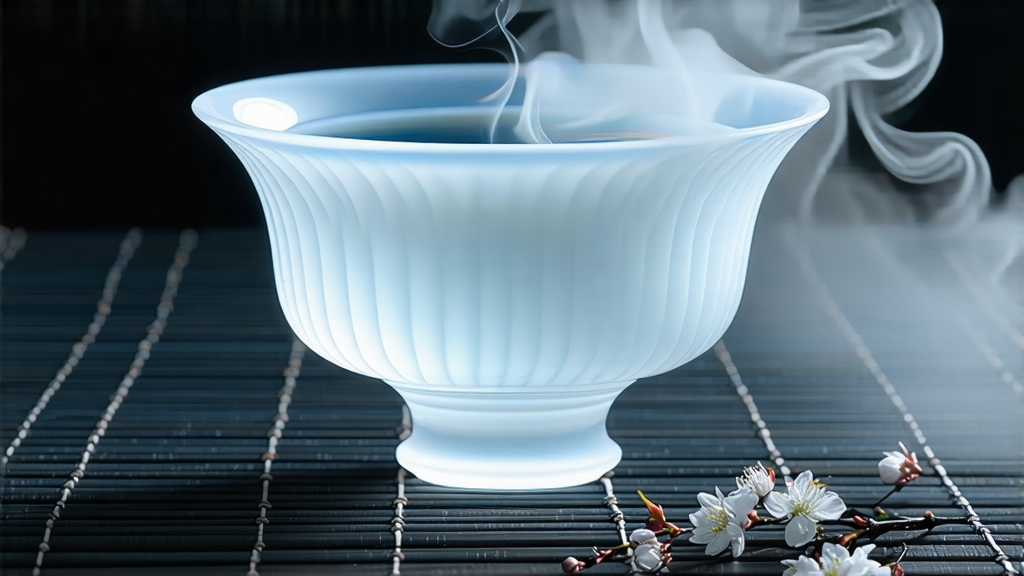
White tea is the most lightly processed of all China’s six major tea families, and within that delicate category Bai Hao Yin Zhen—literally “White-Hair Silver Needle”—sits on the throne. To the uninitiated it can look almost too simple: a small handful of ivory-coloured buds, downy and straight, as if a craftsman had plucked the eyelashes of a snow fox. Yet in those buds is folded the full narrative of Chinese restraint, geography, and time. This article invites the international reader to unfold that narrative, from Tang-dynasty court records to the modern tea-table, and to learn why Silver Needle is often called “the tea that tastes like moonlight.”
-
Historical whispers
The first verifiable mention of a “white” tea appears in the Tang treatise “The Classic of Tea” (758 CE), where Lu Yu praises the pale liquor of cakes made from shaded buds in Fujian. Those cakes vanished with the Song dynasty, but the buds remained. By the Ming, county annals from Fuding note tribute lots of “silver sprouts” shipped northward on fast horses, wrapped in bamboo-leaf and wax-seal to preserve their fragrance. European texts of the 1850s list “Pekoe Souchong” among luxury imports; many scholars believe the term pekoe is an anglicised corruption of bai hao, the white down that coats the bud. Thus Silver Needle is both ancient and global, a quiet traveller whose reputation always preceded it. -
Terroir: two counties, one mountain spine
Authentic Silver Needle comes only from Fujian province—either Fuding or Zhenghe—where three factors conspire: subtropical humidity, red sandy loam rich in quartz, and a unique cultivar called Fuding Da Bai Hao (“Big White Down”). The tea gardens sit between 200–800 m on the Taimu mountain range, cooled by maritime breezes from the East China Sea. In early March, when night temperatures still drop to 8 °C, the bush accumulates soluble sugars to guard against frost; those sugars later translate into the tea’s signature honeyed body. A single kilo of Silver Needle requires roughly thirty-eight thousand buds, all plucked before the Qingming festival, when the first leaf has not yet unfurled. -
Craft: the art of doing almost nothing
Once picked, the buds are laid on bamboo trays only one layer deep and wheeled into a sun-drying yard. For the next 46–60 hours they will undergo nothing more violent than wind and soft sunlight. This is the withering phase, during which enzymatic oxidation is allowed to proceed to roughly 5–10 %—far less than green tea’s kill-green halt, yet enough to mellow grassiness into something floral. Masters gauge readiness by touch: a bud should feel cool as jade yet spring back when pressed. Finally the buds are given a “soft bake” at 40 °C for twenty minutes, just enough to drop moisture to 5 %. No rolling, no kneading, no shaping: Silver Needle is tea in its underwear, unadorned and honest. -
Grades and micro-lots
Within the official GB/T 22291-2017 standard, Silver Needle is divided into three grades—Superior, First, and Second—but connoisseurs speak in micro-lots. “High-mountain moonlight” refers to buds withered at night under open sky, acquiring a faint blue iridescence. “Snow-down” lots are harvested during a rare late frost; the cold shock heightens amino acids, yielding a creamier liquor. Aged Silver Needle, pressed into 100 g cakes and stored at 60 % relative humidity, develops marzipan and sandalwood notes after five years, moving the tea from delicate to profound. -
Brewing: precision in gentleness
Western recipes often fail Silver Needle by treating it like a green tea. The goal is to coax, not cook. Begin with 4 g of buds—about two heaping teaspoons—for a 200 ml vessel. Use 80 °C water, but first “awaken” the buds with a 5-second rinse poured slowly from a height of 10 cm; this rouses aroma without scalding. The first formal infusion lasts 70 seconds; subsequent steeps add 15 seconds each.